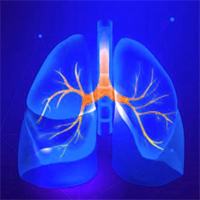Secretion management in patients with ineffective airway clearance with non-invasive mechanical ventilation use: Expert guidance for clinical practice

Submitted: July 11, 2020
Accepted: April 17, 2021
Published: June 7, 2021
Accepted: April 17, 2021
Abstract Views: 6043
PDF: 2744
Publisher's note
All claims expressed in this article are solely those of the authors and do not necessarily represent those of their affiliated organizations, or those of the publisher, the editors and the reviewers. Any product that may be evaluated in this article or claim that may be made by its manufacturer is not guaranteed or endorsed by the publisher.
All claims expressed in this article are solely those of the authors and do not necessarily represent those of their affiliated organizations, or those of the publisher, the editors and the reviewers. Any product that may be evaluated in this article or claim that may be made by its manufacturer is not guaranteed or endorsed by the publisher.
Similar Articles
- Madalina Macrea, Richard ZuWallack, Linda Nici, There’s no place like home: Integrating pulmonary rehabilitation into the home setting , Monaldi Archives for Chest Disease: Vol. 87 No. 2 (2017)
- Laetitia Joërg, Tiffany Trouillon, Carole Jalaber, Isabelle Court Fortune, Antoine Luchez, Claire Boutet, Jean Michel Vergnon, Laurent Bertoletti, Marios E. Froudarakis, Chest ultrasound findings in usual interstitial pneumonia patterns: a pilot study , Monaldi Archives for Chest Disease: Vol. 93 No. 2 (2023)
- Joana Almeida Borges, Antonio M. Esquinas, Biphasic cuirass ventilation in the escalation of non-invasive ventilation in COVID-19: Case report and review , Monaldi Archives for Chest Disease: Vol. 93 No. 4 (2023)
- Nicola Rotolo, Maria Cattoni, Silvia De Maio, Luca Filipponi, Pau Mateo-Ramos, Andrea Imperatori, The surgical approach of late-onset tracheoesophageal fistula in a tracheostomized COVID-19 patient , Monaldi Archives for Chest Disease: Vol. 93 No. 4 (2023)
- Grigoris Stratakos, Vlassis Vitsas, Nikos Koufos, Charalambos Zissis, Philip Emmanouil, Nikos Koulouris, Post-pneumonectomy and post-lobectomy syndromes: case series and review of the literature , Monaldi Archives for Chest Disease: Vol. 87 No. 1 (2017)
- Rosa Spezzaferri, Maddalena Modica, Vittorio Racca, Vittorino Ripamonti, Monica Tavanelli, Gabriella Brambilla, Maurizio Ferratini, Psychological disorders after coronary artery by-pass surgery: a one-year prospective study , Monaldi Archives for Chest Disease: Vol. 72 No. 4 (2009): Cardiac series
- M. Justine, F. Tahirah, V. Mohan, Health-related quality of life, lung function and dyspnea rating in COPD patients , Monaldi Archives for Chest Disease: Vol. 79 No. 3-4 (2013): Pulmonary series
- Dhruv Talwar, Sourabh Pahuja, Deepak Prajapat, Kanishka Kumar, Anupam Prakash, Deepak Talwar, Small airway involvement in severe asthma: how common is it and what are its implications? , Monaldi Archives for Chest Disease: Early Access
- Sergio C. Conte, Giulia Spagnol, Marco Confalonieri, Beatrice Brizi, Deep sedation versus minimal sedation during endobronchial ultrasound transbronchial needle aspiration , Monaldi Archives for Chest Disease: Vol. 88 No. 3 (2018)
- Marzia Vassalini, Andrea Verzeletti, Francesco De Ferrari, Standard of care and guidelines in prevention and diagnosis of venous thromboembolism: medico-legal implications , Monaldi Archives for Chest Disease: Vol. 84 No. 1-2 (2015): Cardiac series
<< < 5 6 7 8 9 10 11 12 13 14 > >>
You may also start an advanced similarity search for this article.

 https://doi.org/10.4081/monaldi.2021.1499
https://doi.org/10.4081/monaldi.2021.1499





